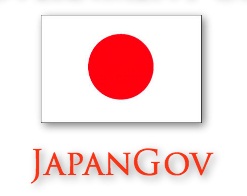In 1603, after decades of civil warfare, the Tokugawa shogunate (a military-led, dynastic government) ushered in a long period of relative political stability and isolation from foreign influence. For more than two centuries this policy enabled Japan to enjoy a flowering of its indigenous culture. Japan opened its ports after signing the Treaty of Kanagawa with the US in 1854 and began to intensively modernize and industrialize. During the late 19th and early 20th centuries, Japan became a regional power that was able to defeat the forces of both China and Russia. It occupied Korea, Formosa (Taiwan), and southern Sakhalin Island. In 1931-32 Japan occupied Manchuria, and in 1937 it launched a full-scale invasion of China. Japan attacked US forces in 1941 - triggering America's entry into World War II - and soon occupied much of East and Southeast Asia. After its defeat in World War II, Japan recovered to become an economic power and an ally of the US. While the emperor retains his throne as a symbol of national unity, elected politicians hold actual decision-making power. Following three decades of unprecedented growth, Japan's economy experienced a major slowdown starting in the 1990s, but the country remains an economic power. In March 2011, Japan's strongest-ever earthquake, and an accompanying tsunami, devastated the northeast part of Honshu island, killed thousands, and damaged several nuclear power plants. The catastrophe hobbled the country's economy and its energy infrastructure, and tested its ability to deal with humanitarian disasters. Prime Minister Shinzo ABE was reelected to office in December 2012, and has since embarked on ambitious economic and security reforms to improve Japan's economy and bolster the country's international standing.
Japan is a parliamentary constitutional monarchy.
Source: CIA World Factbook
Members:
Resources
Displaying 21 - 25 of 27National Spatial Planning Act (Act No. 205 of 1950).
The purpose of this Act is to promote the use, improvement and conservation of national land, from a comprehensive viewpoint of policies for the economy, society, culture, etc., with consideration for natural conditions of national land, by formulating National Spatial Strategies and taking other measures, in combination with measures by the National Land Use Planning Act (Act No. 92 of 1974), and thereby contributing to the realization of the economy and society in which present and future citizens can live rich lives with peace of mind.
Basic Act on the Advancement of Utilizing Geospatial Information (Act No. 63 of 2007).
In view of the fact that promoting the advancement of utilization of geospatial information is essential in establishing an economy and society in which the people can live enriching lives with peace of mind both at present and in the future, the purpose of this Act is to promote policies for the advancement of utilizing geospatial information in a comprehensive and well-planned manner by establishing basic principles and clarifying the responsibilities of the state and local governments for policies on the advancement of utilizing geospatial information as well as defining the basic elemen
Landscape Act (Act No. 110 of 2004).
The purpose of this Act is to build a beautiful and dignified national land, to create an attractive and comfortable living environment, and to bring into being unique and vibrant communities, by formulating landscape plans and taking other comprehensive measures to facilitate the formation of good landscapes in Japan's urban and rural districts, thereby improving the lives of citizens and contributing to the growth of the national economy and to the sound development of the community.



